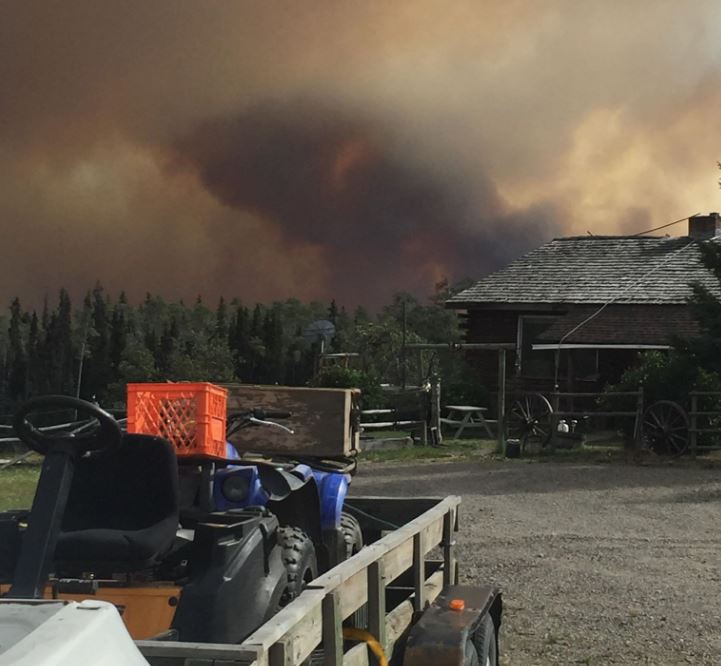The wildfire situation across B.C. is worsening throughout central and northern B.C. as thousands of people are facing the prospect of having to leave their homes.

Near Quesnel, 2,500 residents are under evacuation alert and ready to leave at a moment’s notice.
Several fires are burning in the area, the largest of which is more than 3,000 hectares in size.
The nearby Shovel Lake fire has also forced a local state of emergency to be declared in Fort St. James.
A new wave of lightning strikes has sparked 145 new wildfires across B.C., bringing the current total to nearly 600 fires burning.
Of those fires, 47 are considered wildfires of note, meaning these are wildfires which are highly visible or which pose a potential threat to public safety.
WATCH: Several fires burning in northwest B.C.

Those numbers are up from last year’s record wildfire season but fire officials say that does not mean residents are in a worse situation this year.
“We had hundreds of thousands of hectares burned by this time last year, single fires were just massive in size.”

Get breaking National news
“We have a lot more active fires this year, as I said, almost 600 active fires across the province,” added Skrepnek. “At this time last year, we had about 150.”
WATCH: A large part of Quesnel is now under an evacuation alert and thousands of people are being told to be ready to leave at a moment’s notice. Nadia Stewart reports.

Smoky skies
All the fires burning have brought a heavy blanket of smoke and haze across B.C. with the effects being felt from the coast all the way to the Alberta border.
An air quality statement is in effect in nearly every part of the province.
People with pre-existing health conditions, along with children and seniors, are advised to stay indoors as much as possible to avoid any adverse effects.
Hundreds of wildfire personnel are working around the clock to fight the wildfires around the province.
There are 150 firefighters battling the enormous Alkali wildfire alone. This fire is now 31,110 hectares in size and is burning five kilometres northwest of Telegraph Creek.
“We are getting stretched on a resourcing perspective, so we are continuously bringing in additional resources from out of province,” said Skrepnek.
“We are fully engaging the forest industry here in B.C. for contract resources as well, so we’ve already got hundreds of folks who have already streamed in both from elsewhere in Canada and internationally.”
- Torrential rain shuts and washes out highways in B.C.’s north coast
- Haircut, hornet and luggage woes triggered B.C.’s most unusual 911 calls in 2025
- Heavy rainfall warning for B.C.’s north coast with up to 200 millimetres expected
- Wrong hospital patient transported to Surrey, B.C. home following discharge










Comments